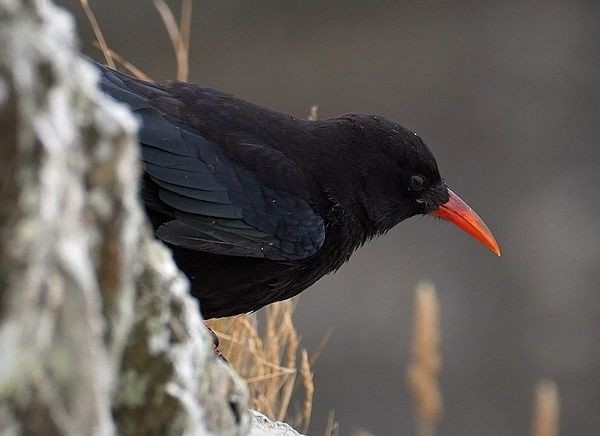Winter sports threaten Alpine wildlife
 |
| Red-billed Chough: (photo: Sean Gray). |
With poor snow conditions blighting prospects for skiing at many of Europe's resorts, developers are casting their eyes on the upper slopes, where snowfall is more reliable. But Italian ecologists warn that construction of pistes above the tree line results in fewer species and lower numbers of birds, compared with natural grassland at similar altitudes.
Without much more environmentally sensitive ways of constructing and managing ski runs, species of European conservation concern, such as Rock Partridge, Red-billed Chough, Black Grouse and Rock Bunting, will be put under additional pressure.
Professor Antonio Rolando and colleagues from Turin University measured the number of birds and the number of bird species at seven sites around Susa Valley - site of last year's Winter Olympics - and the Monte Rosa and Monte Bianco massifs in the western Italian Alps. In 35% of ski-run plots not one bird was detected, and 70% of birds recorded were outside the actual strip of the ski-run.
"Bulldozers and power shovels are used to remove soil and provide suitable slopes for skiers. To a lesser extent, vegetation may also be damaged by skiing and ski-piste preparation by snow-grooming vehicles. The ski pistes that we sampled were devastated environmental patches, from which shrubby and herbaceous native vegetation had been removed and/or severely damaged, and artificial seeding - if any - had produced very poor grass cover."
Areas next to ski runs also suffered, supporting lower numbers of birds. The team found fewer arthropods on the pistes, suggesting that shortage of food may be responsible for so few birds occurring on these sites.
Alpine areas have increased in relative value as wildlife habitat, because of environmental changes at lower altitudes. But Professor Rolando says that because environmental conditions at high altitudes are severe, the avian communities may be particularly fragile.
"More than one-quarter of the 26 bird species in this study are classified as species of European conservation concern," Professor Rolando says. Previous studies have already demonstrated that, as a consequence of ski development, the breeding success of the Ptarmigan can decline, and the local range of the Black Grouse may shrink.
Professor Rolando says retaining the birdlife of these zones is likely to involve developing new, environmentally-friendly ways of constructing pistes, such as only removing rocks or levelling the roughest ground surfaces in order to preserve as much soil and natural vegetation as possible.
LIPU (BirdLife in Italy) share the concerns raised by the new report: "Creation of new pistes in the Alps should be reduced to a minimum and less impacting management in the existing ski areas is badly needed." said Dr Claudio Celada, Director of Conservation at LIPU.
"Artificial snow is being used intensively in nearly all the ski areas in Italy, given snow scarcity. This has an unacceptable impact on the fragile alpine ecosystems and it results in net habitat loss and fragmentation for several alpine species, for whom suitable reproductive areas are rapidly shrinking." he said.
"There is an urgent need to ban new ski areas in alpine SPAs, and to define more environmentally friendly management measures in the existing ones."
To find more similar stories, why not subscribe to BirdLife International's World Birdwatch magazine.

